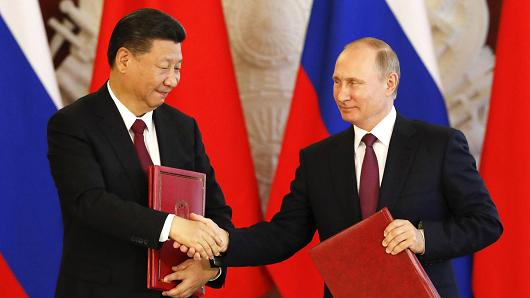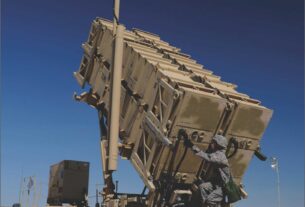Russia miffed over Chinese military strategy for Far East
Across the Amur River, which forms the border between Russia and China, the People’s Liberation Army is all set to deploy new types of short to medium range missiles aiming towards Russia.
Although the deployment pattern does not clarify the new Chinese move, the Chinese military is redeploying its short range and medium range missiles while relocating DF41 ICBMs 200 km away from the frontline into the hinterland.
The deployment of short and medium range missiles replacing or relocating long range ICBMs by China at a time when Beijing needs Russian support more than ever in their shared history, is beyond comprehension for Russian military analysts.
Earlier China will give standard reply that the DF41 ICBMs are deployed along the China-Russian border which is targeting US and various American interests which China might target at the time of crisis.
But now it is getting clearer that China may have some other plans, mainly targeting Russian Far Eastern region where China has now half a million people who are using Russian territory for seasonal agriculture, border trade and services related employment.
China has settled border issues with Russia in 2001 but Chinese military and a section of Chinese experts are continuously talking about Russian Far east as part of Chinese territory which was forcibly taken away by the Czar.
Since China reorganized its military under President Xi Jinping, Russia is quite disturbed over lack of communication from Chinese side about its new border deployment tactic.
After several rounds of talks with China, Russia has realized that China is trying to change the balance of power in a limited way.
Since China is secretly deploying and modernizing its short range missiles which are being fitted with tactical nuclear warheads, Russia is worried that China is playing some bigger game.
Moscow is suspicious that China is planning a new deployment pattern against Russia to target its Far East region where the border may have settled but it is still very fragile.
To counter Chinese offensive plans, Russia has already deployed Iskander missiles along the Chinese border.
Now Russia is deploying a new powerful radar which can detect any object and its movement within 300 km inside Chinese borders.
Russia feels China is trying something new under its new Command Theaters it has recently constituted. At the same time, Russians have noticed that China is rapidly enhancing commercially loss making ventures inside Russian territory.
China is also opening cultural centers along the Russian borders where it is investing millions of dollars by creating roads, malls, casionos, hotels and tourists centers.
Even the Chinese-government-run Confucius Institute in Blagoveshchensk in the Russian Far East, the eastern edge of Siberia that borders China and the Pacific Ocean, is expanding with so many programs to attract Russian citizens where Chinese propaganda activities are on full swing.
This city has only 6 million people and that number of Russian people is dropping fast. Just across the border, though, the three provinces of northeastern China have about 110 million people.
Meanwhile, the Russian Far East has substantial reserves of oil, natural gas, and coal, which China needs to run its supercharged economy.
All that has led many Russians to fear that China will eventually exert control over the Far East region if the Russian Government does not step up the level of activity to keep its population at higher level.
The Russian Far East is facing massive Chinese population surge. A commonly cited projection suggests that Russia will host up to ten million Chinese by 2050.
However, other data posits that the number of Chinese in Russia is now between 400,000 and 550,000, whereas the most recent Russian national census in 2010 estimates that there are around 30,000 Chinese people living in Russia.
The number of Chinese living in the Far East is difficult to narrow down. Current economic realities in both China and Russia are causing Chinese laborers to consider agriculture, an occupation popular with Chinese migrants in the Far East, as a temporary source of income.
Although China and Russia now are new friends but often cooperation and tension are two sides of the same coin.
Take Central Asia. China’s president, Xi Jinping, has set his sights on a “new silk road” called BRI, using China’s billions to help neighbours and regional allies to develop, indirectly supporting growth at home and the expansion of Chinese soft power.
However, this is also Russia’s traditional sphere of influence and any Chinese presence that goes beyond commercial dealings is likely to raise hackles in Moscow.




